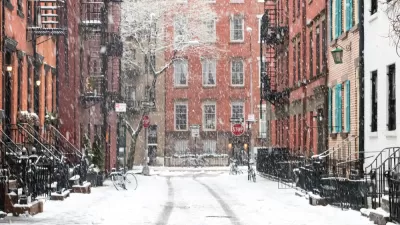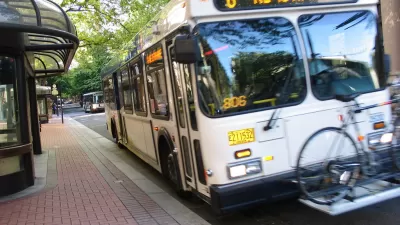Zócalo Public Square has gathered together four accomplished planning and development professionals to give their opinions on which scholar or intellectual of the last 50 years has had the greatest impact on the cities we live in today.
Respondents Mitchell Silver, president of the American Planning Association (APA), Shelley Poticha, director for the Office of Sustainable Housing and Communities at HUD, author and educator Max Grinnell, and Alfredo Brillembourg, co-principal of Urban-Think Tank, discuss their picks for the thinkers who've had a lasting impact on the form and character of our contemporary cities.
Silver recognizes planner and educator Kevin Lynch, who, "influenced a generation of planners and designers at a time when cities were not fashionable or the preferred places to live...Twenty-first century cities owe Kevin Lynch a debt of gratitude for the resurgence of placemaking and good urban design-a resurgence that has been 50 years in the making."
Grinnell cites James Q. Wilson, author of the landmark article on the "broken windows" theory. According to Grinnell, "his [Wilson's] work has found its way into the daily operations of dozens, yea hundreds, of police departments around the United States...Wilson's work has given local law enforcement agencies the intellectual rigor and scholarly backing to engage in a carte blanche type of selective enforcement of certain violations, often leading to a continued marginalization of inner-city communities, most frequently those containing people of color."
FULL STORY: Revenge of the (Urban) Nerds

Alabama: Trump Terminates Settlements for Black Communities Harmed By Raw Sewage
Trump deemed the landmark civil rights agreement “illegal DEI and environmental justice policy.”

Planetizen Federal Action Tracker
A weekly monitor of how Trump’s orders and actions are impacting planners and planning in America.

The 120 Year Old Tiny Home Villages That Sheltered San Francisco’s Earthquake Refugees
More than a century ago, San Francisco mobilized to house thousands of residents displaced by the 1906 earthquake. Could their strategy offer a model for the present?

Indy Neighborhood Group Builds Temporary Multi-Use Path
Community members, aided in part by funding from the city, repurposed a vehicle lane to create a protected bike and pedestrian path for the summer season.

Congestion Pricing Drops Holland Tunnel Delays by 65 Percent
New York City’s contentious tolling program has yielded improved traffic and roughly $100 million in revenue for the MTA.

In Both Crashes and Crime, Public Transportation is Far Safer than Driving
Contrary to popular assumptions, public transportation has far lower crash and crime rates than automobile travel. For safer communities, improve and encourage transit travel.
Urban Design for Planners 1: Software Tools
This six-course series explores essential urban design concepts using open source software and equips planners with the tools they need to participate fully in the urban design process.
Planning for Universal Design
Learn the tools for implementing Universal Design in planning regulations.
Clanton & Associates, Inc.
Jessamine County Fiscal Court
Institute for Housing and Urban Development Studies (IHS)
City of Grandview
Harvard GSD Executive Education
Toledo-Lucas County Plan Commissions
Salt Lake City
NYU Wagner Graduate School of Public Service





























